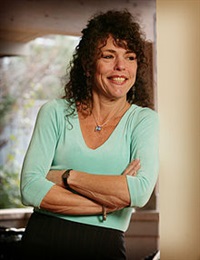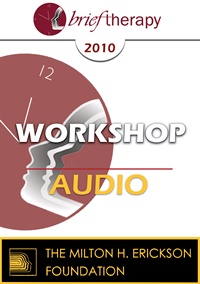BT10 Workshop 21 - Divorce Busting© Do’s and Don’ts - Michele Weiner-Davis, MSW
- Average Rating:
- Not yet rated
- Topic Areas:
- Workshops | Marriage
- Categories:
- Brief Therapy Conference | Brief Therapy Conference 2010 | Pioneers in Couples and Family Therapy
- Faculty:
- Michele Weiner-Davis, LCSW
- Duration:
- 2:19:23
- Format:
- Audio Only
- Original Program Date:
- Dec 10, 2010
- License:
- Never Expires.
Description
Description: This workshop explores how therapists’ assumptions about marriage and change can shape outcomes in powerful ways. With a pragmatic, hope-focused approach, it offers tools for helping even ambivalent or resistant partners reconsider separation. Grounded in action-oriented strategies, it highlights how subtle shifts in tone, timing, and perspective can reignite possibility in struggling couples.
Syllabus Description: Is it possible that our biases about marriage, divorce and the likelihood of change play a monumental role in a couple's decision about their future together? The short answer is, “Emphatically, yes!” Bring a ”Divorce Busting” mindset to your couples work with these field-tested Do’s and Don’ts that encourage even the most resistant spouses to rethink their decisions to leave.
Educational Objectives:
- List five Divorce Busting Do’s—actions that enhance the chances couples will feel motivated to work on their marriages.
- List five Divorce Busting Don’ts- actions that will make reconciliation.
- Describe those specific circumstances when the therapist must step back.
*Sessions may be edited for content and to preserve confidentiality*
Credits
Handouts
| Timestamped Transcript (1.7 MB) | 47 Pages | Available after Purchase |
| Ericksonian Learning Snapshot (243.7 KB) | 2 Pages | Available after Purchase |
Faculty

Michele Weiner-Davis, LCSW Related Seminars and Products
Michele Weiner-Davis, LCSW is the Founder of The Divorce Busting Center in Boulder, Colorado. She is a popular TEDx speaker and the author of eight books including, Healing From Infidelity, and the bestselling Divorce Busting and The Sex-Starved Marriage. She is the recipient of several prestigious awards including the Outstanding Contribution to Marriage and Family Therapy Award from AAMFT.


